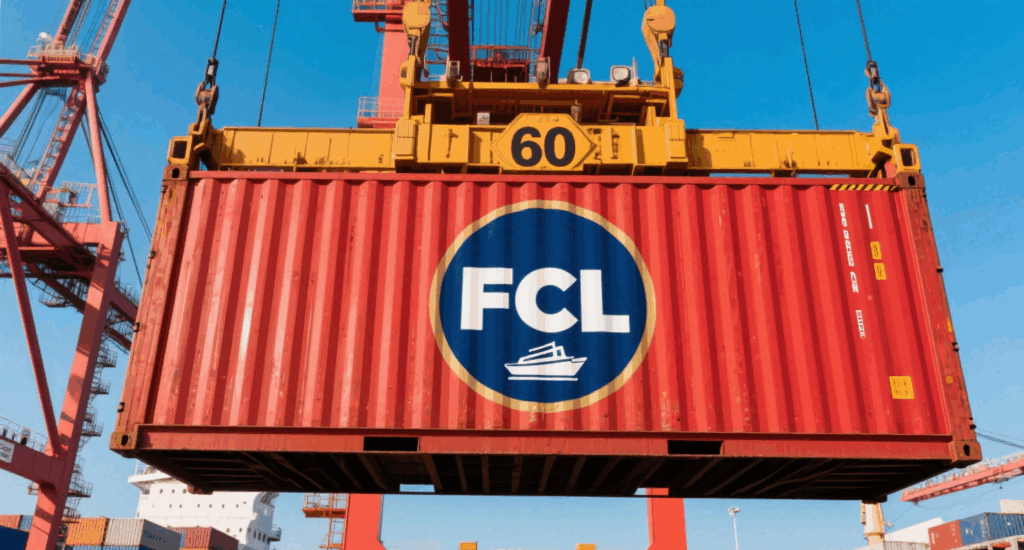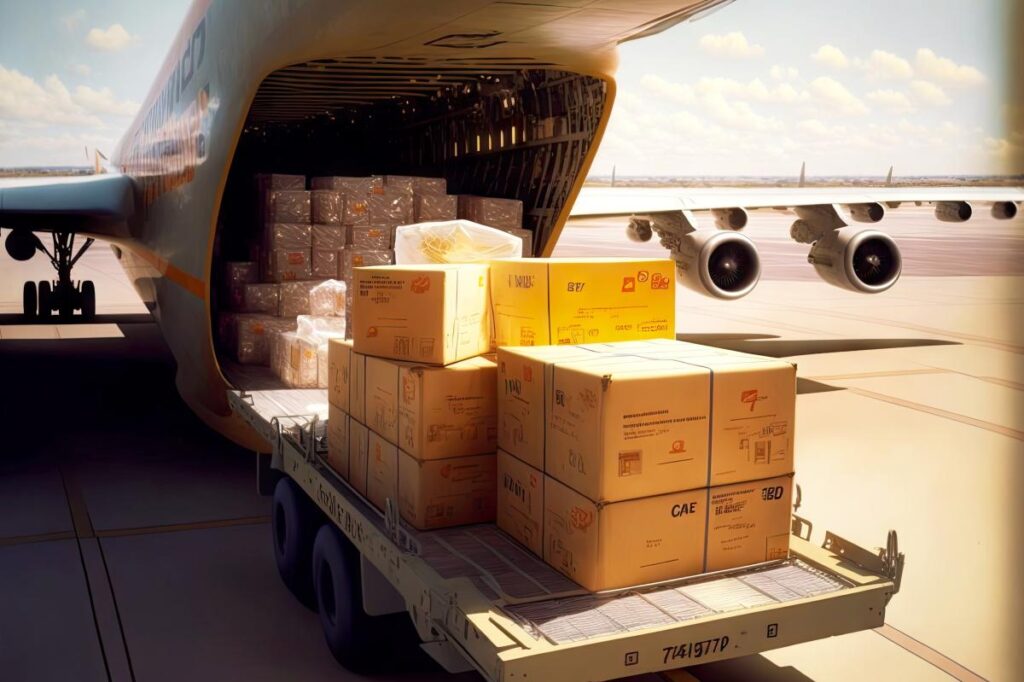Efficient logistics define success in international trade. For companies seeking reliable FCL shipping from China to Netherlands, Full Container Load (FCL) shipping remains the top choice for secure, cost-effective, and timely deliveries. It ensures exclusive container use, minimizing handling risks and guaranteeing predictable schedules from Chinese ports to Dutch destinations.
Why Reliable FCL Shipping Matters for China–Netherlands Trade
Every business importing from China depends on consistent delivery. FCL shipping provides stability for large-volume shipments, ensuring that goods arrive safely and on time.
Key advantages include:
- Exclusive use of one container for your cargo only
- Lower per-unit shipping cost compared to air freight
- Minimal handling, reducing damage risks
- Reliable sailing schedules with fewer delays
Moreover, with the Netherlands being Europe’s logistics gateway, especially through Rotterdam Port, choosing reliable FCL shipping enhances supply chain predictability.
How Long Does FCL Shipping from China to Netherlands Take?
Transit time depends on departure ports, vessel schedules, and customs clearance. On average, reliable FCL shipping from China to Netherlands takes 25–33 days.
| Route | Transit Time (Days) | Main Ports (China → Netherlands) | Mode |
|---|---|---|---|
| Shanghai → Rotterdam | 26–28 | Shanghai, Rotterdam | Sea FCL |
| Ningbo → Amsterdam | 27–30 | Ningbo, Amsterdam | Sea FCL |
| Shenzhen → Rotterdam | 25–27 | Yantian, Rotterdam | Sea FCL |
| Qingdao → Rotterdam | 30–33 | Qingdao, Rotterdam | Sea FCL |
Tip: Opt for direct sailings or express FCL services to avoid delays from transshipment hubs like Singapore or Hamburg.
What Are the Typical FCL Shipping Costs?
Shipping costs fluctuate due to seasonal demand, fuel prices, and freight market conditions. However, FCL shipping remains the most cost-efficient method for large cargo.
| Container Type | Average Cost (USD) | Transit Time | Best For |
|---|---|---|---|
| 20-foot FCL | $2,400 – $3,000 | 25–30 days | Small to medium cargo |
| 40-foot FCL | $3,600 – $4,600 | 25–30 days | Bulk shipments |
| 40-foot High Cube | $3,800 – $4,900 | 25–28 days | Lightweight, large goods |
Additionally, importing through major Dutch ports can lower customs handling and terminal fees compared to smaller European ports.
Required Documents for FCL Shipping and Customs Clearance
Accurate documentation ensures fast customs processing at both ends. Errors can cause unwanted demurrage or storage fees.
| Document | Purpose |
|---|---|
| Bill of Lading (B/L) | Proof of ownership and shipment details |
| Commercial Invoice | Declares the value of goods |
| Packing List | Details cargo content and dimensions |
| Certificate of Origin | Confirms country of manufacture |
| Importer’s EORI Number | Required for EU customs registration |
| Insurance Certificate | Covers transit-related risks |
Additionally, ensure your product’s HS code matches EU import classifications to avoid clearance issues.
Comparing FCL with Other Shipping Methods
Understanding the pros and cons of different transport options helps importers choose the ideal mode.
| Method | Average Transit Time | Cost per CBM (USD) | Advantages | Disadvantages |
|---|---|---|---|---|
| FCL (Sea Freight) | 25–33 days | 50–90 | Reliable, economical | Slower than air freight |
| LCL (Sea Freight) | 30–38 days | 100–160 | Ideal for small loads | Slower and shared handling |
| Rail Freight | 18–22 days | 120–180 | Faster than sea | Limited routes, higher cost |
| Air Freight | 5–7 days | 600–900 | Fastest option | Very expensive |
Conclusion: FCL shipping provides the best balance of cost and reliability for most mid-to-large cargo shipments.
Real Shipping Case Studies
Case 1: Electronics Components
- Route: Shenzhen → Rotterdam
- Goods: Electronic parts (8 tons)
- Container: 40-ft HQ
- Transit Time: 26 days
- Cost: USD 4,300
- Result: Delivered two days earlier than schedule, ensuring just-in-time production.
Case 2: Furniture Export
- Route: Ningbo → Amsterdam
- Goods: Home furniture sets
- Container: 40-ft standard
- Transit Time: 28 days
- Cost: USD 4,000
- Result: Delivered with zero damages; client reported 15% savings vs air freight.
Strategies to Ensure Reliable FCL Shipments
Reliability isn’t just about transport — it’s about coordination and documentation. Importers can enhance shipment stability using these proven strategies:
- Book in advance. Reserve container space 2–3 weeks ahead to avoid peak congestion.
- Choose direct sailings. Skip transshipment delays by selecting direct port connections.
- Partner with experienced forwarders. They handle customs and logistics smoothly.
- Digitize tracking. Use online tracking platforms for real-time cargo visibility.
- Prepare accurate paperwork. Ensure all customs forms and invoices are verified.
- Insure high-value cargo. Protect against damage or loss during sea transit.
By applying these methods, companies improve efficiency and minimize risks.
Selecting the Best FCL Shipping Partner
A trustworthy logistics partner guarantees a smooth shipping experience. Before booking reliable FCL shipping from China to Netherlands, consider the following:
- Reputation and experience in China–EU trade routes
- Transparent pricing without hidden surcharges
- Efficient customer service with real-time updates
- EU customs compliance expertise
- Door-to-door options, including pick-up, packing, and delivery
Furthermore, ask your freight forwarder for consolidated service packages — they often include customs clearance, port handling, and inland delivery, streamlining operations significantly.
Conclusion
In conclusion, reliable FCL shipping from China to Netherlands delivers the ideal combination of cost efficiency, security, and predictable schedules. With trusted freight partners, accurate documentation, and early planning, importers can maintain smooth supply chains between Asia and Europe.
To summarize, FCL shipping remains the smartest long-term strategy for businesses seeking dependable, large-scale logistics across continents.
- Consult TJ China Freight Forwarding for the lowest quote. They will provide you with reliable, cost-effective service.
FAQ:
Q1.What is the average delivery time for reliable FCL shipping?
Typically 25–33 days, depending on the chosen port, vessel schedule, and customs processing speed.
Q2.How do I choose the best FCL route from China?
Select ports like Shanghai or Ningbo for faster, direct sailings to Rotterdam or Amsterdam.
Q3.Can I track my FCL shipment online?
Yes, most carriers offer digital tracking tools for live container status and estimated arrival times.
Q4.What is the benefit of using FCL for fragile goods?
Your cargo gets exclusive container space, minimizing handling and reducing the chance of damage.
Q5.How can I save money on FCL shipping costs?
Book early, consolidate suppliers, and choose cost-effective ports like Rotterdam for lower handling fees.





